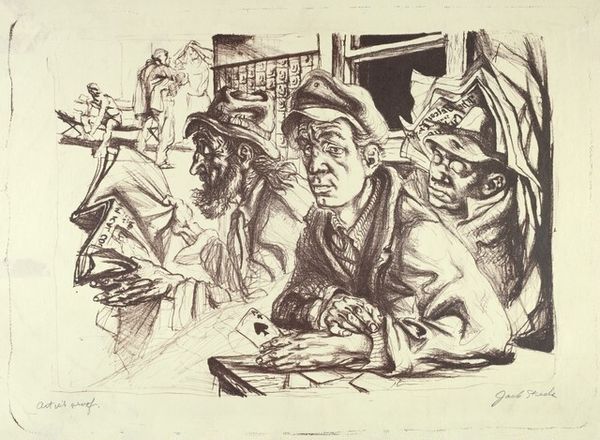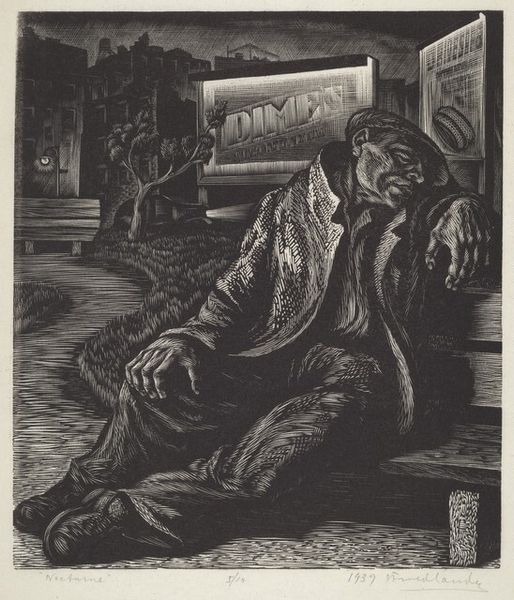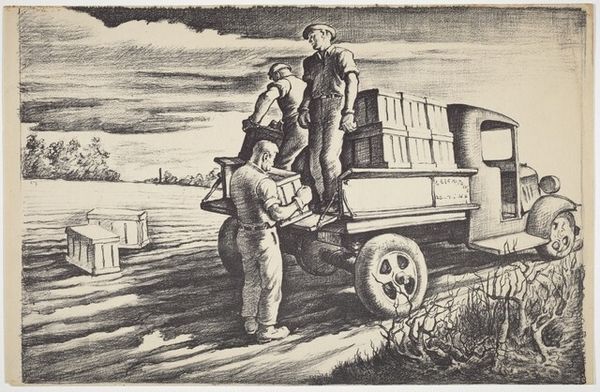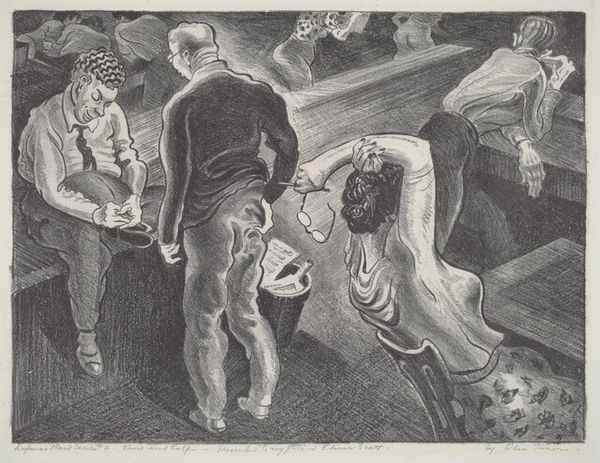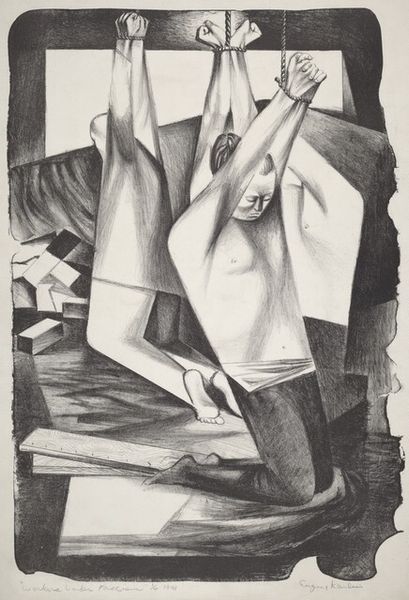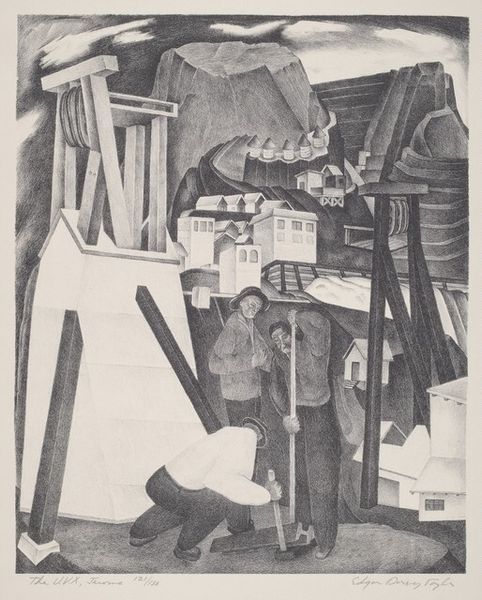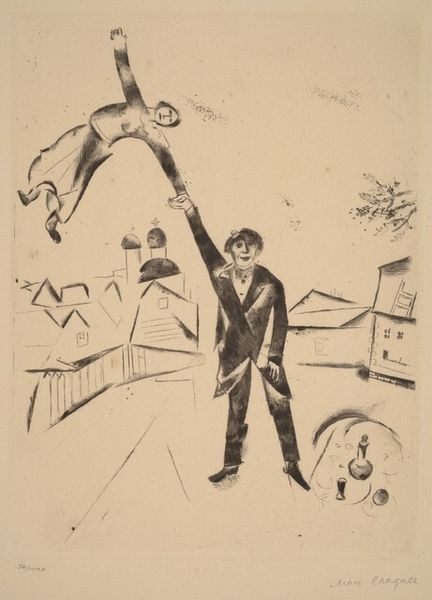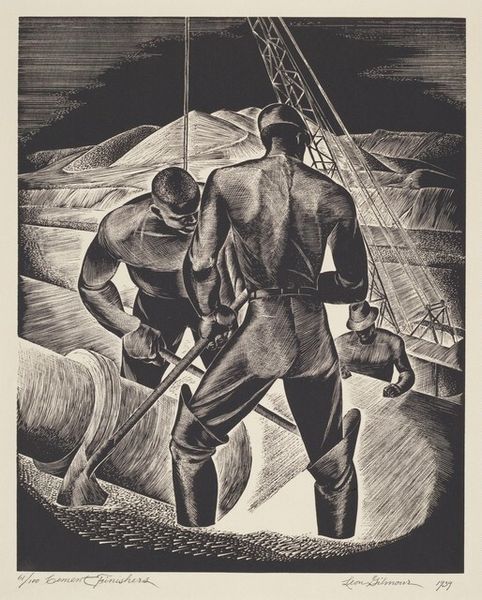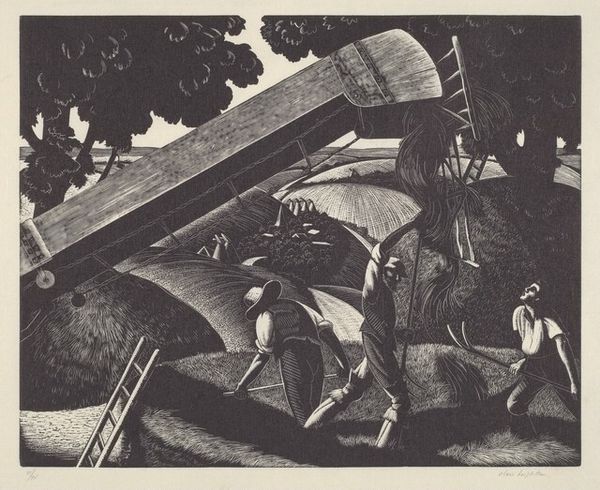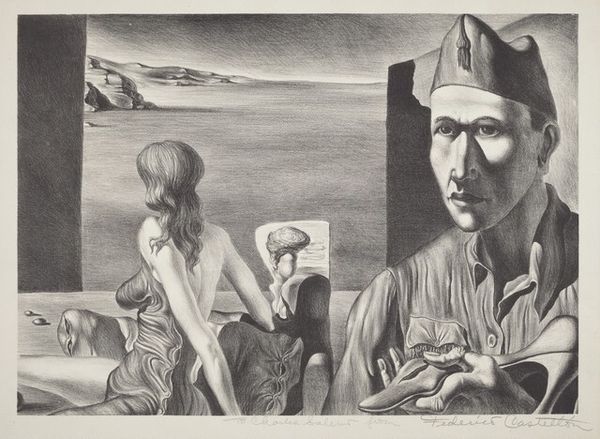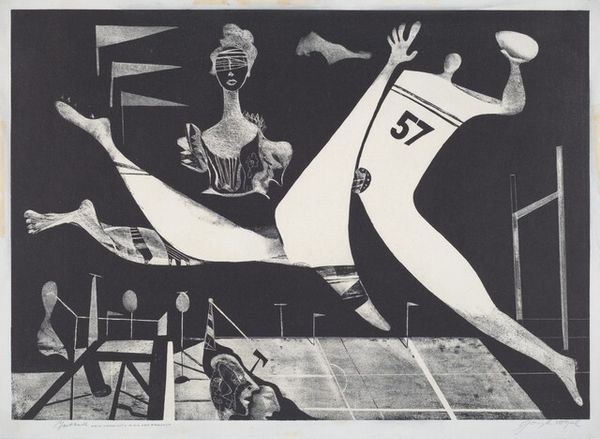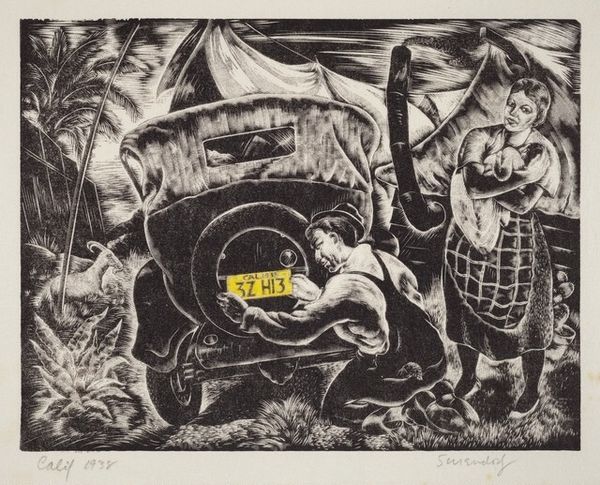
drawing, print, graphite
#
portrait
#
drawing
# print
#
social-realism
#
graphite
#
cityscape
#
realism
Dimensions: Image: 305 x 387 mm Sheet: 406 x 533 mm
Copyright: National Gallery of Art: CC0 1.0
Curator: Well, that’s bleak. Not a postcard version of New York, that’s for sure. Just utter dejection radiating off of these two figures. Editor: Indeed. We're looking at "On the East River," a graphite drawing completed around 1934 by Nicolai Cikovsky. The scene depicts two men at the edge of the East River, amidst the backdrop of a gritty cityscape. It is Social Realism, after all. Curator: Right, that period. The lines are incredible—the texture of those worn clothes, the weary slump of their bodies…you can practically feel the grit and the humidity. And it's so cleverly composed! One man sleeps, face down on a discarded newspaper full of cheerful sports pictures; the other is slumped, head in hand, staring off into who-knows-what darkness. There's such a sharp contrast. Editor: And note how the industrial landscape mirrors their downcast state. Barges and cranes loom in the background, symbols of both progress and the relentless economic hardship of the Depression. It reflects a widespread concern that many citizens shared, mirroring the anxieties, struggles, and resilience present in this time of distress. Curator: It’s a city portrait too, isn’t it? A portrait of what city life can do to you. I’m also intrigued by that discarded newspaper they’re on—sports stars! You can imagine them once dreaming of the kind of success those guys had, maybe playing baseball as kids. Editor: It definitely speaks volumes about the socio-political context of the era. It offers a glimpse into the harsh realities faced by many during the Great Depression, and it doesn’t shy away from depicting that reality. Curator: Exactly. It avoids that romanticized image that some art from that time attempts to convey. This scene shows vulnerability and loss—it leaves you with more questions than answers. Editor: Absolutely. Cikovsky encourages the viewer to reflect on the cost of progress and the human spirit, specifically during hard times. Curator: He really makes you consider the individuals often left behind. And as a social commentary, I don’t think the piece could do a better job. Editor: Definitely, “On the East River” is one of those works that just stays with you. A reminder to consider the stories behind every face.
Comments
No comments
Be the first to comment and join the conversation on the ultimate creative platform.

